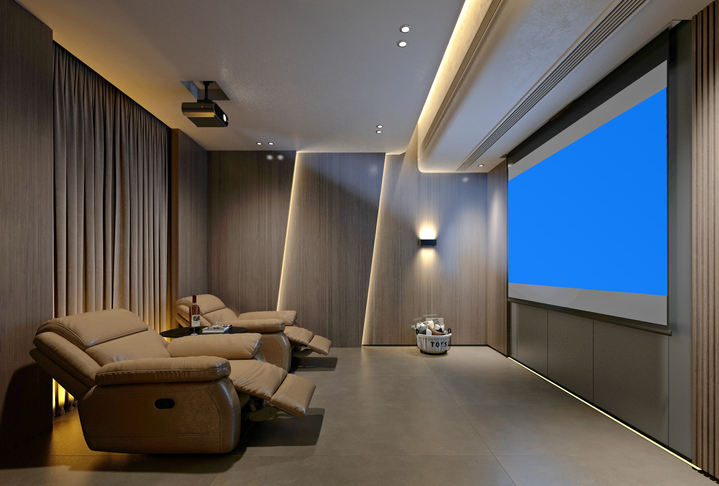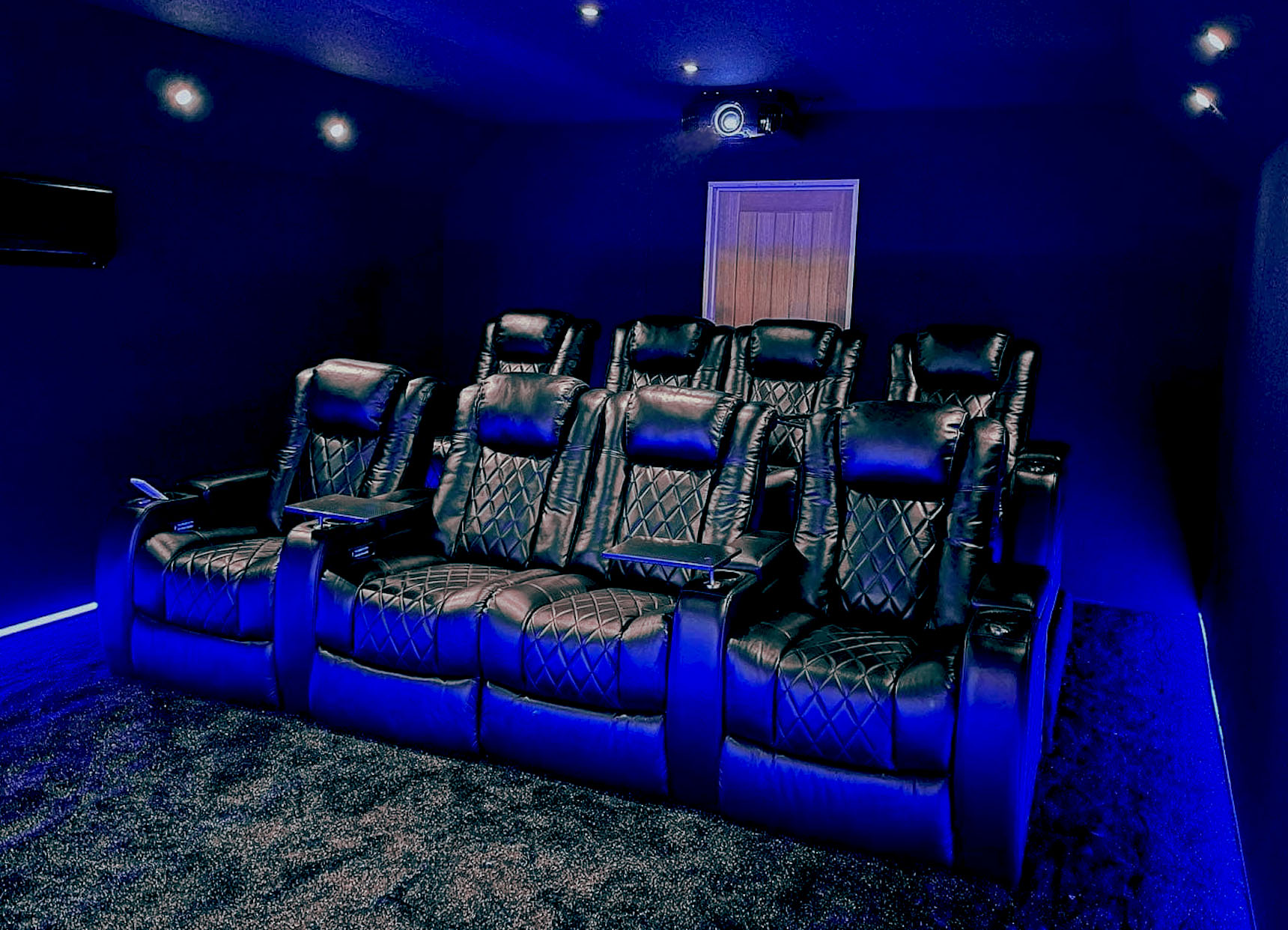Home Theater 101: Everything You Need to Know for a Cinematic Experience in the house
Developing a home theater that measures up to the cinematic experience of a business theater involves mindful consideration of numerous parts, including display option, audio systems, and room format. Each element plays a pivotal role in achieving the preferred ambiance and capability. Whether you are pondering the optimal display dimension or the complexities of surround audio, comprehending these principles is necessary. As we discover these critical components, it becomes noticeable that the options made can considerably impact your total viewing experience, leaving one to consider exactly how these choices will form your personal cinema.
Selecting the Right Screen
When setting up a home theater, choosing the ideal screen can make or break the viewing experience - home theater installation tampa. The screen works as the centerpiece of your configuration, affecting image high quality, viewing angles, and total visual. Trick factors to think about include display kind, size, and resolution
First, figure out the suitable display size based on your area dimensions and seating range. Next off, choose in between numerous screen kinds, such as fixed-frame, mechanized, or retracting screens, each offering unique benefits.
Resolution is another essential aspect. For a truly immersive experience, consider a display created for 4K or also 8K material, ensuring intensity and clarity. In addition, take into consideration the screen's gain, which affects brightness and contrast; a higher gain can improve illumination in well-lit areas, while a lower gain might be more ideal for darker environments.
Selecting Audio Equipment
Audio equipment is a critical element of any home movie theater system, substantially boosting the total viewing experience. The choice of audio gear can establish the deepness, clarity, and immersion of noise, crucial for creating a motion picture ambience.
When picking audio equipment, consider a surround audio system, which typically includes a receiver, several speakers, and a subwoofer. A 5.1 or 7.1 channel system is recommended, where the first number represents the audio speakers and the second the speaker, supplying an immersive soundscape. The receiver is the heart of the system, handling sound and video clip signals, and must sustain modern styles like Dolby Atmos for an improved spatial experience.
Quality audio speakers are vital; search for designs that provide a balanced audio account with good bass response. Floor-standing speakers can create richer noise, while shelf alternatives conserve area. Furthermore, think about wireless alternatives for convenience of installation, although wired systems usually deliver remarkable efficiency.

Optimum Seating Plans
Producing a suitable home movie theater experience pivots substantially on ideal seating arrangements. The arrangement of seats plays an essential duty in both convenience and viewing quality, directly impacting the total cinematic experience.
First, take into consideration the display dimension and checking out distance. An usual guideline is to position seats at a distance roughly 1.5 to 2.5 times the angled dimension of the screen. This makes sure an immersive experience without straining the eyes.
Next, altitude is critical. The back rows ought to be greater than the front to stay clear of blockages if your seating is in a tiered format. For level seats, make sure that the front row is not also close to the display, and that everyone has a clear line of vision.
Moreover, consider the arrangement in terms of social dynamics. Group seating can improve the public experience, while private seats may be chosen for personal viewing.

Lastly, prioritize convenience with ergonomic seating that supports extensive watching periods. Integrating recliner chairs or cushioned seats can substantially improve the experience, making the home movie theater a recommended destination for both enjoyment and leisure.
Lighting and Atmosphere
Effective lighting and ambiance are important elements of a properly designed home theater, as they substantially influence the seeing experience. The ideal lights can boost the cinematic feeling, while bad selections can interfere with it. For optimal outcomes, think about a split lighting technique that consists of ambient, job, and accent lights.
Ambient lights gives basic lighting, guaranteeing that the area is not totally dark, which can strain the eyes. Dimmer buttons are extremely suggested, permitting modifications based on the material being seen. Job lights, such as wall sconces or floor lamps, provides useful illumination for activities like analysis or navigating the room without disrupting the overall environment.
Accent illumination can be used to highlight building functions or create centerpieces, including depth and rate of interest to the space. LED strip lights behind displays or along shelves can offer a refined glow that improves the aesthetic experience without overwhelming the viewer.

Wiring and Installation Tips
A tactical circuitry configuration is critical for attaining ideal performance in your house cinema system. Appropriate wiring not just makes certain high-quality sound and video signals yet also improves the total aesthetic of your space. Begin by drawing up your layout, recognizing where each part will be positioned, including your display, audio speakers, and receiver.
When picking wires, focus on premium, properly gauged circuitry to reduce signal loss. HDMI cords ought to be made use of for video clip links, while audio speaker cord Discover More Here need to match the specs of your speakers and amplifier. Choose in-wall ranked cords to follow security standards and preserve a clean appearance.

Verdict
In recap, creating an outstanding home cinema experience requires careful consideration of various elements, including screen selection, audio tools, seating plans, illumination, and circuitry. By prioritizing these aspects, a motion picture ambience can be effectively reproduced, enabling for immersive viewing experiences that rival standard movie theater settings.
Developing a home movie theater that matches the cinematic experience of a business theater involves cautious consideration of numerous elements, consisting of display selection, sound systems, and room design.When establishing up a home theater, selecting the ideal display can make or damage the checking out experience. Next off, select between different screen kinds, such as fixed-frame, link motorized, or retractable displays, each offering distinct benefits. For a truly immersive experience, consider a display developed for 4K or even 8K content, guaranteeing sharpness and clearness.In summary, developing an extraordinary home cinema experience requires mindful consideration of various elements, including screen selection, audio devices, seating plans, lights, and electrical wiring.